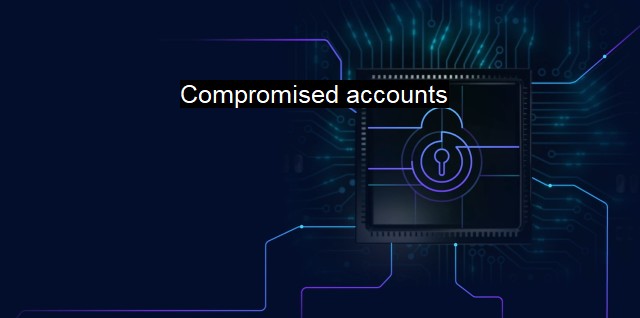What are Compromised accounts?
Preventing Compromised User Accounts with Antivirus Software: Protecting Against Phishing Attacks and Other Cyber Threats
Compromised accounts are a significant issue in the world of cybersecurity and antivirus measures. Generally speaking, a compromised account refers to a situation where an unauthorized user gains access to an individual or an organization's confidential online accounts. This episode poses severe risks as it could lead to the loss of personal information, reputation damage, and even significant financial losses.Firstly, it is crucial to understand how accounts can be compromised. This usually happens when malevolent individuals, known as hackers or cybercriminals, employ various tactics to deceitfully obtain the login details of an account. Some of the most common approaches include phishing, where emails are sent to victims imitating legitimate services to trick individuals into revealing their confidential information. Another common method is the installation of malware like viruses, trojans, ransomware, or spyware on a victim's device to track keystrokes or extract confidential data directly.
Recognizing compromised accounts might be difficult because cybercriminals regularly refine their hacking methods to remain one step ahead of both users' awareness and security defenses. certain hints may indicate a compromised account – unrecognizable posts or messages from the victim’s account, unrecognized password modification emails, unexpected depletion of online credits, untraceable transaction records on e-commerce or banking services, or unrecognized devices logging onto the account.
When an account compromise happens, the impacts can be varied and alarming. For individuals, it could mean the exposure or loss of private data like videos, photos, and communication records. Domestically, this could produce examples of identity theft, stalking, or other forms of personal harassment. For businesses and organizations, losses tend to be considerably larger as their databases often host intuition-sensitive data, e.g., customer information, internal communications, financial data, and business strategies. If such data reaches the wrong hands, it could lead to asset-driven impacts like loss in revenue, loss of consumer confidence, regulatory penalties, and even closure.
Antivirus software plays a crucial role in warding off such cybersecurity risks. Antivirus scans your devices in search of malware or suspicious activities. If detected, most robust antivirus solutions either destroy these harmful entities or quarantine them until further user action. By offering real-time protection, antivirus software defends against familiar threats like known malware and offers Heuristic analysis to tackle unrecognized or newer malware.
Relying on antivirus software alone may not suffice when it comes to account protection. Continuous efforts must also be put into maintaining robust password hygiene: regular password changes, the adoption of two-factor authentication (2FA), or using a password manager to manage complex passwords can all help shield accounts from prying eyes. continuously educating yourself and the team about common phishing techniques, suspicious email attachments, or the hazards of unsecured wi-fi networks is crucial to prevent unwarranted access to accounts.
Despite these proactive measures, there remains a chance your account might still get compromised. In such situations, one must act quickly to minimize the damage. Key actions must include resetting the password immediately, contacting service providers to notify them, checking device settings to detect any foreign changes, using an antivirus scan to detect and eradicate potential malware, and contacting professional services (such as your local police department or a cybersecurity company) to safeguard your rights and, if applicable, identify and prosecute the cybercriminals.
Compromised accounts are a prevalent issue in the age of digitalization. Anyone with an online presence, be it individuals or corporates, needs to arm themselves with knowledge about cyber threats, robust passwords, and reliable antivirus software to protect their accounts and the valuable information they contain from cybercriminals. being vigilant in monitoring account activities becomes invaluable because quick action reduces potential damages when an account is compromised.

Compromised accounts FAQs
What are compromised accounts?
Compromised accounts are user accounts that have been accessed or taken over by unauthorized individuals or attackers. These attackers can gain access to sensitive information such as login credentials, credit card details, or personal information.How do attackers gain access to compromised accounts?
Attackers can gain access to compromised accounts using various techniques such as phishing, social engineering, and brute force attacks. They can also exploit vulnerabilities in software or use malware to obtain login credentials or other sensitive information.What should I do if my account has been compromised?
If you suspect that your account has been compromised, you should immediately change your password and enable two-factor authentication if available. You should also contact the service provider and inform them about the incident. It is recommended to scan your devices for viruses and malware using an antivirus program.How can I prevent my account from being compromised?
To prevent your account from being compromised, you should use strong and unique passwords, avoid sharing your login credentials with anyone, and enable two-factor authentication if available. It is also important to keep your devices and software up to date, and to be cautious of suspicious emails or links that can lead to phishing attacks. Using a reliable antivirus program can also help prevent malware infections.| | A | | | B | | | C | | | D | | | E | | | F | | | G | | | H | | | I | | | J | | | K | | | L | | | M | |
| | N | | | O | | | P | | | Q | | | R | | | S | | | T | | | U | | | V | | | W | | | X | | | Y | | | Z | |
| | 1 | | | 2 | | | 3 | | | 4 | | | 7 | | | 8 | | |||||||